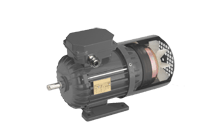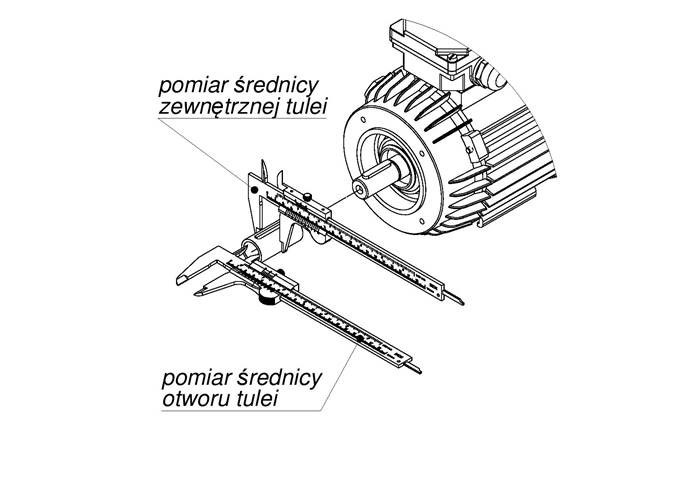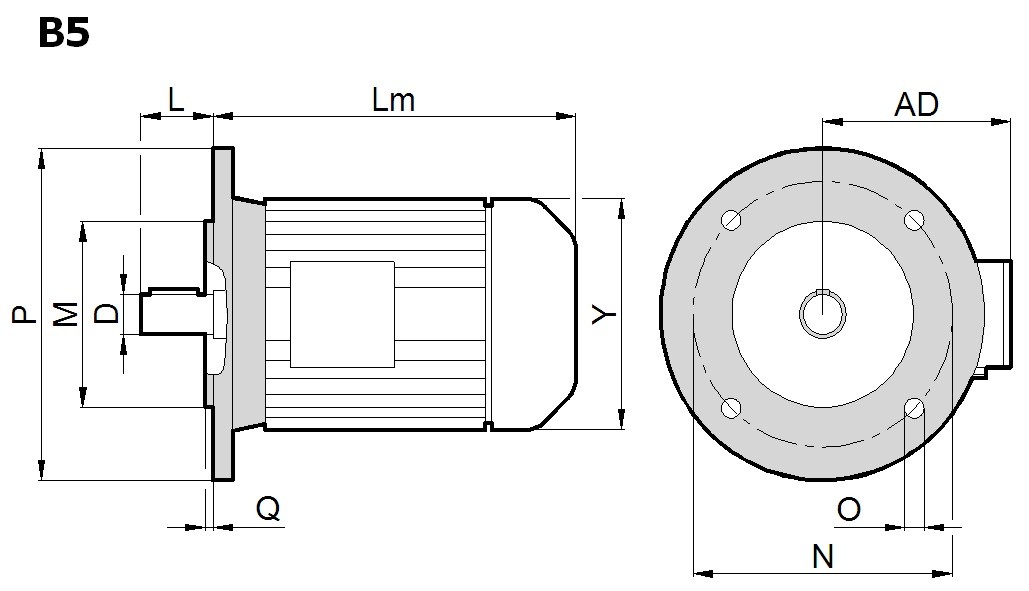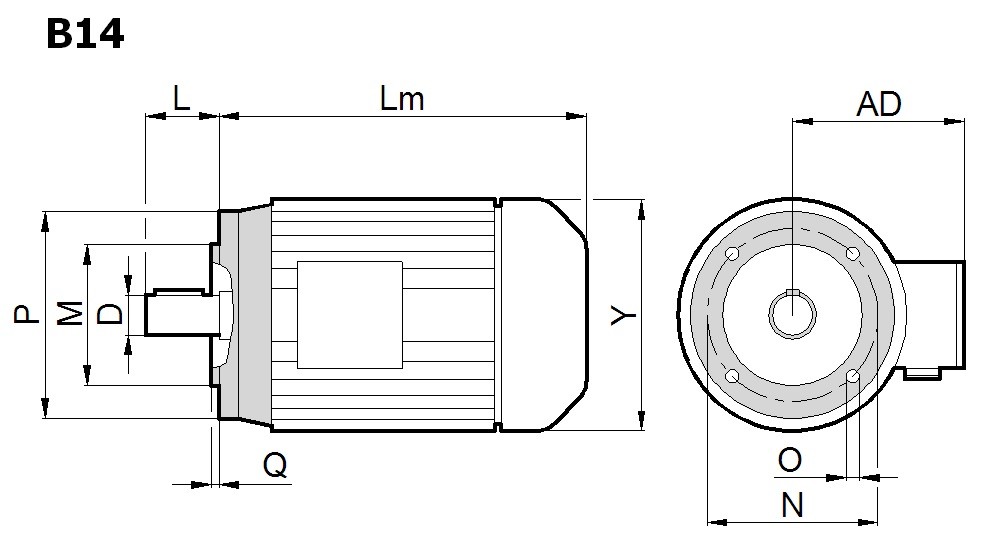Electric motors
FORCED COOLING
Forced cooling fan is nothing but an external fan with independent power supply, which builds up on the motor for better heat dissipation. In most cases, they are used when the motor with the inverter is running, when at low fan speed, the cooling efficiency is low and the engine starts to heat up. Overheating the engine can damage it. Foreign cooling is most often used when the engine speed in continuous or long-term operation is below 700 [1 / min]. It is not a stiff boundary. It all depends on the ambient conditions, temperature, humidity, dust, building conditions (air circulation) and load. In some special cases, even 8-field motors (ok700 [1 / min]) are equipped with an external fan. It all depends on what temperature the engine gets during operation.
Our offer includes forced cooling fan motors, which we can fix with any engine. They have 230V or 400V power supply as standard (other voltages on request). Please note that when working with the inverter, external cooling must be connected independently.

TRANSMISSION AND ENGINE CONNECTION - MEASUREMENTS
The transmission connection defines the diameter of the hole in the drive axis and the diameter of the collar. The motor connection defines the diameter of the shaft and the diameter of the flange. In order for the transmission to be connected to a given motor, its connection must match the motor connection, which means that the diameters of the gearbox and motor shaft have to be of the same diameter and the diameters of the flanges must have the same diameters. It happens that a gear with a smaller shaft is fitted with a gear opening with one degree more, using a so-called reduction sleeve. However, motor flanges must have absolutely identical diameters. Reduction sleeves are widely used to speed up the order.
Measurement to identify connections:


EFFICIENCY IE1, IE2, IE3
The efficiency of the electric motor is the ratio of the mechanical power given to the motor shaft to the electric power consumed by the motor. Electricity that is not converted into mechanical energy causes losses. To reduce these losses and increase the efficiency of the engine, its design and materials are optimized.
In European Union countries, legal regulations regarding the efficiency of low-voltage electric motors have been introduced. It was determined that it is the electric motors that are responsible for the highest energy consumption in the economy. In 2009, the European Commission published the (EU) Regulation 640 / 2009, also known as EU MEPS (Minimal Efficiency Performance Standard). The regulation established:
- the subject and scope of the engines covered by the regulations,
- levels and efficiency classes (IE1, IE2, IE3, IE4),
- the method of determining efficiency on the rating plates,
- the timetable for implementing the directive.
schedule of efficiency classes
rotational powers 01-01-2015 01-01-2017
2800/1400/900 0,75÷7,5kW IE2 IE3
7,5 ÷ 375kW IE3 IE3
Exclusions:
- engines equipped with a variable speed controller (with inverter),
- braked engines,
- explosion-proof motors,
- 700rpm engines,
- engines designed to work:
• in full immersion in liquid,
• at altitudes above 4000m above sea level,
• at an ambient temperature above 60 ° C,
• at ambient temperatures below -30 ° C,
• other according to the regulation.
ENGINE MECHANICAL SIZE - HOW TO DEFINE
The mechanical size of the motor is the dimension from the motor axis to the plane of the motor base (mounting feet). This dimension is often called a motor lift.
The mechanical size corresponds to the constant diameters of the rollers.
Induction motors of alternating current and some direct currents have standardized motor connections, e.g.
The 0,37-1400 engine will definitely have a diameter shaft fi14 and one of the 3 motor flanges B14 B14B or B5
The most popular collars on the market are B5 and B14. Motors with such flanges are available in large quantities from the warehouse.
B14B medium flanges sometimes called B14 / 1 are less popular.
Sometimes it happens that engines with the same horsepower and speed come in two different sizes. These smaller ones are referred to as motors in a reinforced housing. They are standard in a larger housing, but they are also available in a small version.
When placing an order or request for quotation, specify the motor connection specifying the mechanical size and flange size, eg 71B14 or by providing a motor connection: flange diameter and shaft diameter of the 105 / 14 motor
The table below shows which motors are present in a given mechanical size. It allows you to identify the engine.





